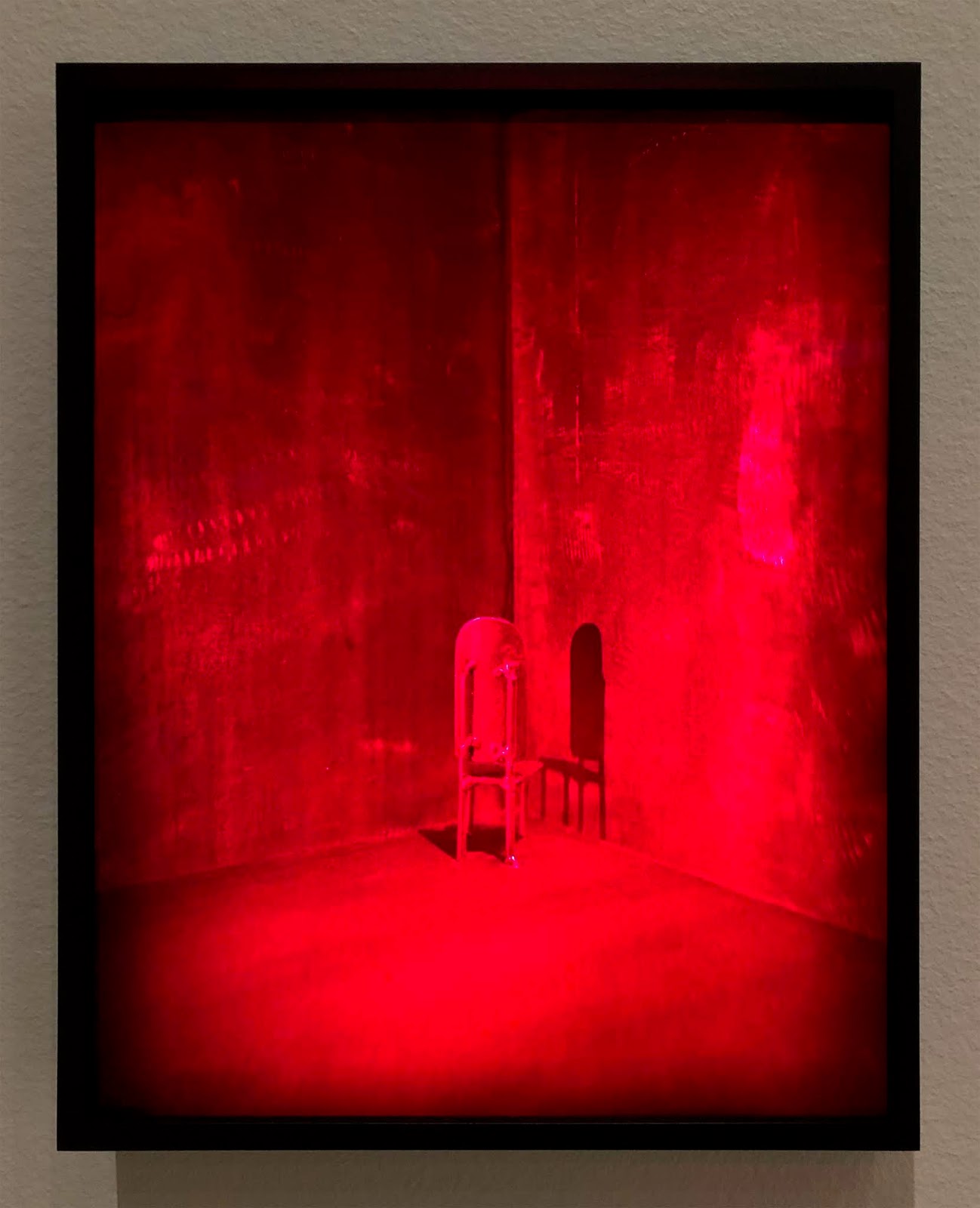 |
| Louise Bourgeois, untitled, 2014. Getty Museum |
The Getty Museum is showing, for the first time, three holograms acquired as part of a group of 105 donated by collectors Guy and Nora Barron in 2018. The Barrons funded the C-Project in which 20 high-profile contemporary artists were invited to create glass-plate holograms. The three on view, by Louise Bourgeois and Ed Ruscha, are part of "Museum Acquisitions 2019: Director's Choice."
Are holograms art? The question reprises
are photographs art? The reception of
holograms has been volatile. In 1992 New York's Museum of
Holography closed after a 16-year run in the cultural capital of record.
The closure was blamed on anemic fundraising and
existential concerns about the status of holograms as photography and/or
art. The following year the museum's 1500-piece collection was acquired
by the MIT Museum, Cambridge, Mass. The MIT collection includes the
first laser hologram and documentary material by Dennis Gabor, the
Daguerre of holography.
 |
| Bruce Nauman, First Hologram Series: Making Faces (F), 1968 |
The best known artistic holograms are those produced by Bruce Nauman in the late 1960s. Mostly forgotten is Salvador Dalí's foray into the medium, a hologram of rockstar Alice Cooper (1973). But it
remains fair to say that no artist of great reputation has ever achieved
that status through holography alone. Meanwhile artists are exploring a profusion of new digital technologies that can do full-color interactive 3D better than holograms can. (Coachella-style "holograms" of Tupac, etc. are not holograms at all.) It's possible that holography's moment has already passed.
 |
| Salvador Dalí, Portrait of Alice Cooper's Brain, 1973 |
Nonetheless the three holograms in "Director's Choice" are unexpectedly compelling, holding their wall space next to paintings and sculptures. Other artists in the Barron's C-Project gift to the Getty include Richard Artschwager, John Baldessari, Larry Bell, Ross
Bleckner, Chuck Close, Roy Lichtenstein, Dorothea Rockburne, Robert
Ryan, and James Turrell.
 |
| Ed Ruscha, The End, 2017. Getty Museum |




Comments